December 2021
By William Alberque and Timothy Wright
More states than ever have cruise and ballistic missiles in their arsenals. In 1987, for instance, only three states—the United Kingdom, the United States, and the Soviet Union—possessed cruise missiles. Twenty-three states and one nonstate actor possess them today. The demand for these systems is partly driven by their increasing utility, resulting from exponential improvements in survivability, accuracy, and speed. Missile proliferation has been accelerated by the spread of enabling technologies that have allowed more actors to overcome previous structural hurdles.
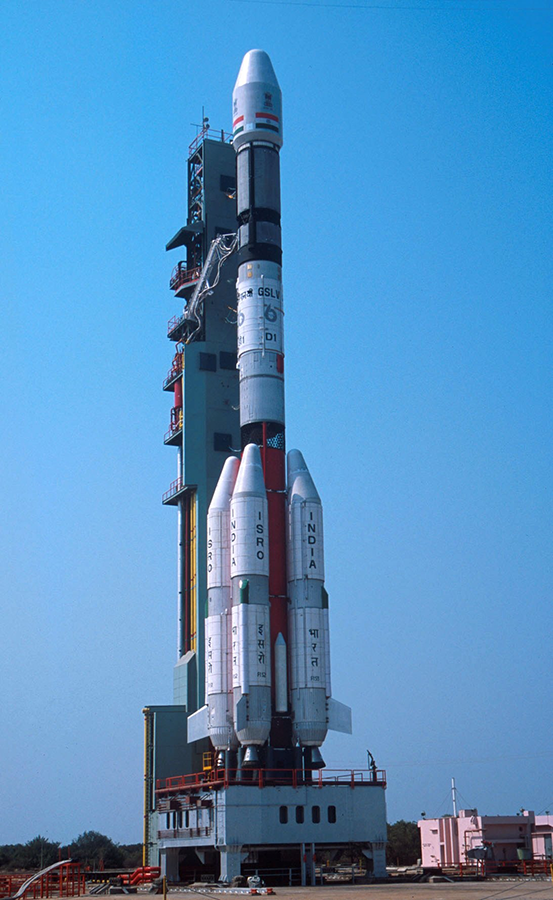 These and other threats present significant challenges to those who seek to maintain global governance and restrictions on missiles. The landscape has altered dramatically since the end of the Cold War, when the most significant effort to stop the spread of missile technology through multilateral export controls, known as the Missile Technology Control Regime (MTCR), was established. As a result, there is an urgent need for innovative thinking about how to reform the existing governance structure. The responsibility to do so needs to be global, and the choices will be difficult. Political will at the highest level is essential.
These and other threats present significant challenges to those who seek to maintain global governance and restrictions on missiles. The landscape has altered dramatically since the end of the Cold War, when the most significant effort to stop the spread of missile technology through multilateral export controls, known as the Missile Technology Control Regime (MTCR), was established. As a result, there is an urgent need for innovative thinking about how to reform the existing governance structure. The responsibility to do so needs to be global, and the choices will be difficult. Political will at the highest level is essential.
The Regime
The MTCR is a technology-focused export control regime, comprising a voluntary association of 35 member states that apply agreed standards, known as the Guidelines for Sensitive Missile-Relevant Transfers, to limit the export of technology that can be used to deliver weapons of mass destruction (WMD). It differs from most other export control regimes by creating a presumption of exportation denial of longer-range ballistic and cruise missiles and unmanned aerial vehicles (UAVs), as well as the most worrisome technology related to their manufacture.1 The MTCR puts the burden for compliance on the sellers rather than the buyers, but it contains no verification or enforcement requirements. The guidelines include a detailed technical annex that defines complete delivery systems and production facilities, known as Category I items, as well as supporting equipment, software, and technologies that could contribute to building delivery systems, known as Category II items.2
The scope of the MTCR has expanded considerably over the past three decades. The regime was secretly negotiated by the Group of Seven (G7) nations and announced on April 16, 1987, to address what was seen as an urgent proliferation crisis driven by detected or suspected sales of nuclear-capable missiles by the Soviet Union and China, as well as emerging and advanced missile programs in countries such as Argentina, Brazil, India, Israel, Pakistan, and South Africa. The MTCR also was influenced by a series of breakthroughs in bilateral negotiations between the Soviet Union and the United States, including a decision after the 1986 Reagan-Gorbachev summit in Reykjavik to conclude the Intermediate-Range Nuclear Forces (INF) Treaty, which banned both countries from possessing ground-launched cruise and ballistic missiles with ranges between 500 and 5,500 kilometers. The INF Treaty drafters intended for the MTCR to reinforce the treaty by providing global limits on the spread of missiles, missile components, and related technology and by focusing on ballistic missiles capable of delivering a 500-kilogram warhead a distance of 300 kilometers. This range was based on the performance of the Soviet-designed Scud short-range ballistic missile, which at the time was thought to be the technological threshold for a missile capable of delivering a nuclear warhead.
In 1992, the regime was altered to include all potential systems capable of delivering chemical, biological, and nuclear weapons, except manned aircraft, thus expanding the regime’s scope to include UAVs, target drones, and cruise missiles. Members also began issuing regular appeals to nonmember states to apply the MTCR guidelines on a voluntary basis and declare themselves “universal adherents.”3 Following the September 11 attacks, the MTCR’s goals were expanded to address missile transfers to nonstate actors, as reinforced by UN Security Council Resolution 1540.
Regime Strengths
The MTCR is a supply-side arrangement that has evolved into a global norm, increasing security and helping to curb missile proliferation. This occurred despite the absence of a universal, legally binding treaty within the UN framework. The MTCR is not a panacea and has many faults, but it also has strengths and demonstrable successes.
The regime’s membership incorporates many of the most important state possessors and producers of missiles and related technologies. The roster grew from the original G7 states in 1987 to 32 members in just more than a decade. Further growth has since slowed, with only three additional states—Bulgaria, India, and South Korea—joining since 1998. Given that New Delhi possesses nuclear weapons, Seoul historically has employed a nuclear hedging strategy, and both states operate diverse missile programs, their inclusion in the regime marks an important effort to control potential missile proliferation.4
Furthermore, by limiting membership to the most significant states that possess delivery systems and related technologies, the MTCR’s three expert working groups can operate at the highest levels of detail.5 The resulting MTCR annex is an impressive achievement, with an agreed scope and a set of definitions of the highest technical complexity. The expertise provided by MTCR working group members also means the annex is continually updated by some of the world’s most knowledgeable missile technology experts. The annex has such as an extraordinary level of detail, relevance, and scope that it forms the basis for stricter missile technology controls enacted under other UN Security Council resolutions.6
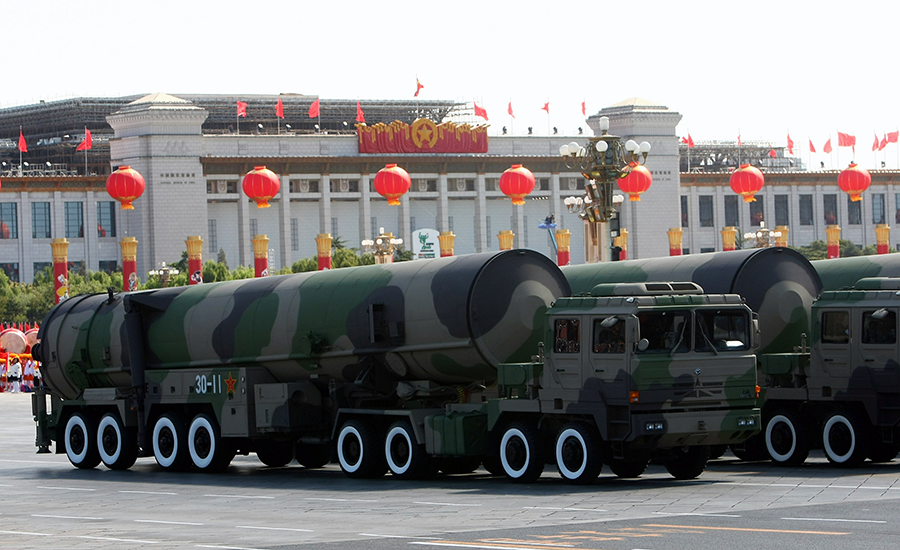 The adaption of a fully elaborated and well-defined list of WMD-capable delivery systems creates a nonproliferation norm through the presumption of denial standard for Category I items and establishes the principle that states pursuing missile exportation or acquisition will be scrutinized. Paragraph 2 of the MTCR guidelines notes that “particular restraint will be exercised in the consideration of Category I transfers regardless of their purpose, and there will be a strong presumption to deny such transfers.”7 The particular restraint and presumption to deny standards for the most concerning systems and their enabling technologies therefore put pressure on countries, whether regime members or not, to adhere to the guidelines.
The adaption of a fully elaborated and well-defined list of WMD-capable delivery systems creates a nonproliferation norm through the presumption of denial standard for Category I items and establishes the principle that states pursuing missile exportation or acquisition will be scrutinized. Paragraph 2 of the MTCR guidelines notes that “particular restraint will be exercised in the consideration of Category I transfers regardless of their purpose, and there will be a strong presumption to deny such transfers.”7 The particular restraint and presumption to deny standards for the most concerning systems and their enabling technologies therefore put pressure on countries, whether regime members or not, to adhere to the guidelines.
Finally, the MTCR has a program of regular outreach that seeks to persuade nonmember states to adopt MTCR controls through partnership and the “adherent” system. This is an important evolution because it has allowed nonmember states to adhere not simply rhetorically but through a formal mechanism.8 Estonia, Kazakhstan, and Latvia are recognized adherents while China and Israel have declared themselves as self-adherents.
Together, these factors have played a role in slowing or stopping several significant missile programs, including the joint Argentine-Egyptian-Iraqi Condor II ballistic missile program; the missile stockpiles of former Warsaw Pact states that had aspirations to join the EU, NATO, and the nuclear Nonproliferation Treaty; the missile programs of India and South Korea; and Libya’s Category I missiles.9 Although other factors, including diplomatic and economic pressures and incentives, encouraged these positive outcomes, the MTCR regime played an important contributory role.
Unilateral and Institutional Constraints
Despite these MTCR strengths, if a state decides to acquire advanced missile technology and is willing to pay the costs, it likely will succeed. Although the MTCR can delay, complicate, and raise the political and economic costs of such a decision, the regime is unable to prevent or reverse missile proliferation unless member states wield an array of other separate security, diplomatic, or economic incentives or punishments. Moreover, the regime has an innate discriminatory nature that has been exploited as MTCR members trade among themselves and sometimes seek special exemptions or allowances for trade or other forms of support with states inside and outside the regime.
The MTCR’s powerlessness to unilaterally prevent missile proliferation reflects its voluntary character, the lack of formal linkages to the UN system, and the facts that adherence to the guidelines is entirely self-enforced and that no sanctions or penalties can be imposed on states that circumvent the regime.10 The regime also has shortcomings in membership because it does not include states with significant ballistic and cruise missile programs, including China, Iran, and North Korea. Relatedly, the MTCR’s lack of commitment to halt missile development, production, or trade among members has led some nonmembers states to criticize its legitimacy. The impression that the MTCR is an exclusive club of haves and have-nots has resulted in some nonmembers labeling it a cartel.11
There are other institutional weaknesses that affect efficacy. The regime requires consensus for decisions, thereby limiting its ability to quickly resolve political issues or adapt to change. The consensus rule has prevented expanding membership to key states due to unrelated political considerations, such as Italy blocking India’s membership bid due to a dispute following New Delhi’s arrest of two Italian servicemen.12 An area where advancements in capabilities have outstripped the agreed MTCR guidance is UAV technology, whose utility has improved substantially since MTCR restrictions on exporting these systems were adopted in 1992. These restrictions were implemented due to concerns that UAVs might be used for delivering chemical, biological, and nuclear weapons. Given the growing global demand for acquiring these systems for conventional purposes by non-MTCR members, such as China, the United States proposed changes to allow the exportation of UAVs that cannot exceed an airspeed of 800 kilometers per hour.13 After its proposals failed to gain consensus, Washington took unilateral action.14 In this case, consensus changes to the regime were hampered by a combination of problems, including the disconnect between technical experts and political representatives and competing economic and nonproliferation interests between members.15
The regime is also weakened by its lack of a permanent secretariat. This places a strain on France, which serves as the MTCR host and “point of contact,” and prevents the development of a dedicated, professional, international staff that can carry forward the regime’s work in a consistent, focused way. The lack of a permanent secretariat can also impede faith in the implementation of the agreement, especially if a nonmember perceives itself to have differing interests from the point of contact.
Although the MTCR’s rotating chair demonstrates a lack of institutional bias and a sharing of leadership, this feature creates significant risks, including the possibility that a chair may lack the political clout or will to achieve anything during their term and that institutional knowledge will be lost and the momentum behind projects will dissipate each time the chair changes. The rotating chair has created uncertainty when countries have hesitated to volunteer for the chairmanship, requiring last-minute lobbying to persuade somebody to fill the position. This issue was temporarily resolved during the 2019 plenary meeting, as members agreed to three successive chairs until 2023, but no additional chairmanship appointments have been publicly agreed beyond that.16
The lack of technical expertise among some member and adherent states and the disconnect between technical experts and political representatives can burden MTCR chairs and stretch limited national resources and capabilities. Encumbrances in carrying out routine tasks can limit progress. For instance, in some member states, export control and arms control functions are housed in different departments; and economic and trade policies are considered separately from security policy, often to the detriment of all these equities.
Finally, the MTCR does not address vertical proliferation among missile producers, thus allowing these member states to develop and expand existing domestic programs. The regime also allows for continued cooperation among states with preexisting programs, such as the Trident II submarine-launched ballistic missile, which the UK and the United States both operate as part of their respective sea-based nuclear deterrents. In other instances, some states, such as South Korea, have received waivers and been able to expand their domestic ballistic and cruise missile production capability despite earlier efforts to limit their ambitions. Earlier this year, the United States agreed to lift all limits on South Korean missile development due to political pressure from Seoul following increased North Korean nuclear and missile threats.17
Incremental Reform of the MTCR
Advocates for incremental reform of the MTCR argue that the work needs to focus on achievable, “low-hanging fruit,” which is often described but somehow never harvested. Incremental approaches should likely be informed by Track 1.5 meetings, a UN Security Council Resolution 1540 comprehensive review, and possibly a convention of a high-level UN group of governmental experts with a clear mandate to identify specific proposals, backed by substantial political will to use upcoming MTCR plenaries to agree to changes. Although the previous UN expert group in 2008 was unable to agree to substantial changes, the current global environment of accelerating missile proliferation may provide a new impetus for future agreement.
Given the institutional weaknesses of the MTCR, establishing a permanent secretariat to support and improve national expert training, implementation of the regime, and information sharing should be a priority. It could help overcome the distrust of nonmember states who sometimes view the point of contact as a biased actor. Other aims should be opening internal processes and decision-making to greater scrutiny and increasing MTCR engagement with other global and regional initiatives, such as the Missile Dialogue Initiative and the Warsaw Process Missile Proliferation Working Group.18
Such changes would initially require coordination and agreement in small groups followed by sequencing and leadership of outreach to members and nonmembers alike to build support for any changes. Progress would require sustained engagement within and among governments to bring together the correct mix of diplomats and experts on arms control, export control, missile and UAV technology, security policy, and intelligence. Even so, such an incremental process would take years and would have a low likelihood of success based on the failure of all recent efforts toward systemic reform. That calculation is only likely to change if there is some catalytic event that is so broadly destructive or destabilizing that the major powers begin spending the political capital necessary to make significant changes.
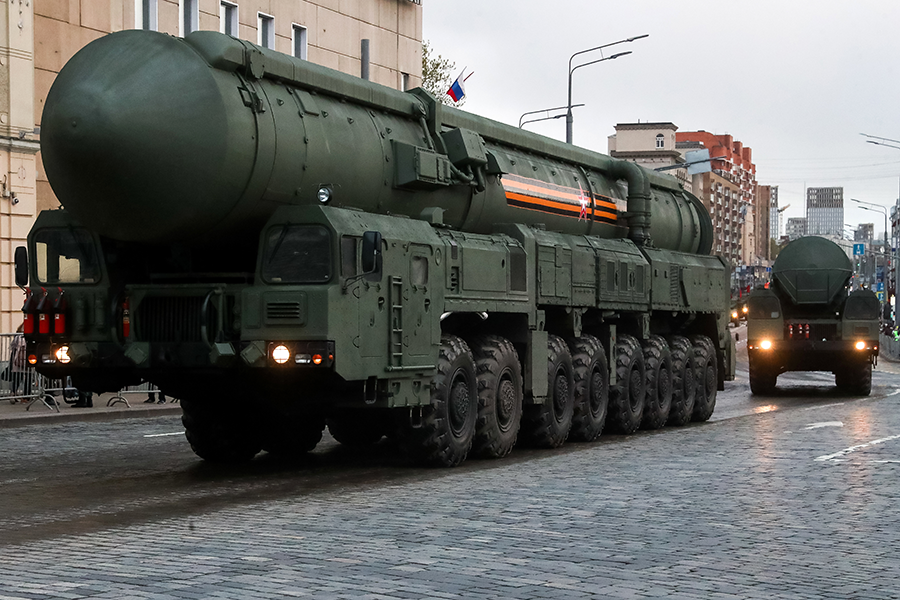 There is hope for a more radical approach. Russia, as it took over the rotating MTCR chair in 2021, expressed interest in radical reforms to global missile governance. Deputy Foreign Minister Sergei Ryabkov, in his address to the MTCR plenary on October 6, called for an experts group to begin talks on a legally binding global missile treaty.19 So far, the membership has not expressed enthusiasm for this proposal, but it may be an opening for more ambitious ideas. A radical approach could also be timelier, insofar as it may channel Russia’s enthusiasm for change and make some incremental changes more achievable than they are today.
There is hope for a more radical approach. Russia, as it took over the rotating MTCR chair in 2021, expressed interest in radical reforms to global missile governance. Deputy Foreign Minister Sergei Ryabkov, in his address to the MTCR plenary on October 6, called for an experts group to begin talks on a legally binding global missile treaty.19 So far, the membership has not expressed enthusiasm for this proposal, but it may be an opening for more ambitious ideas. A radical approach could also be timelier, insofar as it may channel Russia’s enthusiasm for change and make some incremental changes more achievable than they are today.
Radical Approaches to Change
More drastic approaches to MTCR reform should be designed so that even if such efforts fall short, they change the terms of the debate and help advance the goals anticipated under the incremental reform rubric.20 Support for a broad package of radical changes does not require abandoning the existing MTCR framework, but rather reconsidering the scope, scale, membership, and impact of the regime. This could include, for instance, setting limits on the spread of UAVs capable of launching missiles above a certain speed and establishing a code of conduct for their use that would incorporate the standards of international humanitarian law.
Rather than focusing singly on the MTCR, states could deliver more useful benefits and provide a radical change to global missile controls by strengthening and increasing the MTCR’s complementarity with other frameworks, including with UN Security Council Resolution 1540, which is aimed at preventing nonstate actors from acquiring weapons of mass destruction and the means of delivery, and the Hague Code of Conduct Against Ballistic Missile Proliferation, a voluntary transparency and confidence-building instrument that aims to establish norms around ballistic missile proliferation.21 This initiative could include having the UN General Assembly pass a resolution to form an experts group to design a global agreement within the United Nations to subsume the MTCR and the Hague Code of Conduct. The eventual structure could include transforming the MTCR into a technical body focused on the MTCR annex and its expert working groups, which would present options to the Hague Code of Conduct, which would act as a plenary body for decisions and promulgation.
A larger change could involve expanding the Resolution 1540 infrastructure into a joint secretariat with the MTCR and Hague Code of Conduct in Vienna, with a secretary-general appointed by the UN and an ad hoc national chair rotating every two years, along with regular monthly technical and political meetings and an annual decision-making plenary. Considering the dual capability of civilian space technology, a possible agreement could also integrate the UN Office for Outer Space Affairs, the MTCR, and the Hague Code of Conduct, with the proposed secretariat providing a common operating framework that encompasses national policy, launches, and situational awareness in outer space under one umbrella. Finally, incorporating the Proliferation Security Initiative into the expanded organization would enable broader cooperation on interdiction.
Other functions could include the development of new confidence-building measures modeled after U.S.-Russian missile launch and strategic exercise notifications and the establishment of national risk reduction centers and a central data-fusion center to increase transparency and minimize risk.22 Sharing the benefits of the peaceful pursuit of space launch capabilities, including communications and navigation, with less capable member states would reduce the conceptions of have and have-not states.
Setting forth obligations regarding transparency and responsibility for corporations and other entities seeking or using satellite launch vehicle capabilities would ensure that commercial firms are not overlooked and minimize disguised civil-military fusions. Incorporating targeted UN implementation, enforcement, and reporting measures, based on those used to limit the missile programs of Iran and North Korea, into the agreement would provide codified penalties for violations. This could be taken one step further by codifying all of the above into a unified agreement, which could be named the Missile and Space Technology Transparency and Control Treaty (MASTTRACT), or the Missile Nonproliferation Treaty (MNT).
Limited Time to Act
The MTCR’s original purpose was to limit the proliferation of missiles that could deliver a 500 kilogram warhead a distance of 300 kilometers. This was later expanded to limit the spread of all nonpiloted means of delivering chemical, biological, and nuclear weapons. The regime was also meant to establish a norm that would restrict activity by nonmembers, some of whom were active proliferators of missile systems.
The MTCR has successfully facilitated cooperation by like-minded states to limit the proliferation of missiles and associated technologies, and it has bought time by delaying and increasing the cost of these practices. Despite increases in membership and the broad application of the regime’s guidelines, the number of states that ignore the guidelines while possessing or producing systems capable of accurately delivering large payloads over long distances continues to increase. The regime has also allowed members to trade freely among themselves and to seek special exemptions or allowances for trade with states as needed, such as South Korea. These practices have allowed for exploitation, thereby weakening the efficacy of the regime and its relevance.
Meanwhile, many more countries have proven that they can overcome the technological hurdles that previously limited missile proliferation, including the ability to manufacture solid fuel propellants, miniaturized turbofan engines, complex rocket motors, precision guidance systems, and special-property materials for reentry vehicles.23 Most damningly, these capabilities are now within the grasp of nonstate actors, ranging from commercial firms such as Space X to insurgent groups such as Ansarullah.
Despite its successes, the MTCR has failed to substantially resolve the concerns that it was created to address. Further proliferation of missile technology, as demonstrated by Iran, North Korea, and nonstate actors such as Ansarullah and Hezbollah, is only a matter of time despite the likelihood of the UN Security Council adopting additional resolutions tailored specifically to prevent this from happening.
Reform of the MTCR’s scope and functions is the only viable path forward, and an incremental approach could deliver tremendous benefits. Achieving this will require long-term focus and significant political, intellectual, and financial commitments. Although a more radical approach is unlikely to be agreed among members and adherent states, if such radical ideas are pushed within an unofficial Track 1.5 format, they could shock the system toward incremental reform.
Recent decisions on waivers by the MTCR and unilateral reinterpretations of the regime’s scope are likely the beginning of a broader shift by member states away from the presumption of denial that is at the core of the MTCR. Even if no reform action is taken, it is likely that the UN Security Council will still look to the MTCR for guidance on national export controls, but this will occur as an increasing number of technologically advanced states outside the regime ignore or take advantage of MTCR limitations on member states by selling restricted items to interested buyers.24 Advanced missile and space launch technology will spread in the meantime as the world continues down a dangerous path. The world therefore must decide not only if it wants reforms that strengthen the MTCR, but whether it is really committed to making that reform happen.
ENDNOTES
1. Missile Technology Control Regime (MTCR), “MTCR Guidelines and the Equipment, Software and Technology Annex,” n.d., https://mtcr.info/mtcr-guidelines/ (accessed November 20, 2021).
2. MTCR, “Missile Technology Control Regime Equipment, Software and Technology Annex,” MTCR/TEM/2019/Annex, October 11, 2019.
3. MTCR, “Plenary Meeting of the Missile Technology Control Regime - Oslo, Norway — 29 June – 2 July 1992,” July 2, 1992, https://mtcr.info/plenary-meeting-of-the-missile-technology-control-regime-oslo-norway-29-june-2-july-1992/ (hereinafter 1992 plenary meeting).
4. Mark Fitzpatrick, Asia’s Latent Nuclear Powers: Japan, South Korea and Taiwan (New York: International Institute for Strategic Studies, 2016), intro.
5. There are three annual meetings of experts from Missile Technology Control Regime (MTCR) partners in support of the annual plenary meeting: the Technical Experts Meeting, which seeks agreement on updates to the MTCR Equipment, Software and Technology Annex; the Information Exchange; and the Licensing and Enforcement Experts Meeting.
6. Brendan Murphy, “Public Statement From the Plenary Meeting of the Missile Technology Control Regime, Sochi, 8 October 2021,” MTCR, October 26, 2021, https://mtcr.info/public-statement-from-the-plenary-meeting-of-the-missile-technology-control-regime-sochi-8-october-2021/ (hereinafter 2021 MTCR public statement).
7. MTCR, “Guidelines for Sensitive Military Missile-Relevant Transfers,” n.d., https://mtcr.info/guidelines-for-sensitive-missile-relevant-transfers/ (accessed November 20, 2021).
8. 1992 plenary meeting.
9. For further details on the specifics of some of these actions, see Nuclear Threat Initiative, “Argentina Missile Facilities,” December 7, 2011, https://www.nti.org/analysis/articles/argentina-missile-facilities/; “Bulgaria, Slovakia Still Hold SS 23s,” Arms Control Today, September 1997, https://www.armscontrol.org/act/1997-09/arms-control-today/bulgaria-slovakia-still-hold-ss-23s; Kelsey Davenport, “Chronology of Libya's Disarmament and Relations With the United States,” Arms Control Association, March 2021, https://www.armscontrol.org/factsheets/LibyaChronology.
10. Jeffrey Lewis, “Storm Shadow, Saudi and the MTCR,” Arms Control Wonk, May 31, 2011, https://www.armscontrolwonk.com/archive/204051/saudi-arabia-storm-shadow-the-mtcr/.
11. Baqir Sajjad Syed, “Why Pakistan Doesn’t Want to Join the MTCR,” Dawn, June 30, 2016.
12. Tom Kington and Vivek Raghuvanshi, “Italy Blocks Indian Application to MTCR,” Defense News, October 17, 2015.
13. Valerie Insinna and Aaron Mehta, “Here’s How the Trump Administration Could Make It Easier to Sell Military Drones,” Defense News, December 19, 2017.
14. Daryl G. Kimball, “U.S. Reinterprets MTCR Rules,” Arms Control Today, September 2020, p. 32.
15. Mike Stone, “U.S. Relaxes Rules to Export More Aerial Drones,” Reuters, July 24, 2020.
16. Jeffrey Taylor, “Public Statement From the Plenary Meeting of the Missile Technology Control Regime, Auckland, 11 October 2019,” MTCR, October 18, 2019, https://mtcr.info/public-statement-from-the-plenary-meeting-of-the-missile-technology-control-regime-auckland-11-october-2019/; 2021 MTCR public statement.
17. Timothy Wright, "U.S. and South Korea Scrap Ballistic Missile Range Limits," IISS, June 2, 2021, https://www.iiss.org/blogs/analysis/2021/06/us-south-korea-ballistic-missile-range-limit.
18. IISS, “Missile Dialogue Initiative,” n.d., https://www.iiss.org/research/defence-and-military-analysis/missile-dialogue-initiative (accessed November 20, 2021); U.S. Department of State, “Missile Proliferation Working Group Summary Statement,” November 15, 2019, https://2017-2021.state.gov/missile-proliferation-working-group-summary-statement/index.html.
19. 2021 MTCR public statement.
20. William Alberque, “Revitalising Arms Control: The Missile Technology Control Regime (MTCR) and the Hague Code of Conduct Against Ballistic Missile Proliferation (HCoC),” IISS, November 2021, https://www.iiss.org/-/media/files/research-papers/iiss_revitalising-arms-control-the-mtcr-and-the-hcoc_mdi-02112021.pdf.
21. Kolja Brockmann, “Controlling Ballistic Missile Proliferation: Assessing Complementarity Between the HCoC, MTCR, and UNSCR 1540,” HCoC Research Papers, No. 7 (June 2020), https://www.nonproliferation.eu/hcoc/wp-hcoc/uploads/2020/06/Assessing-the-complementarity-vf.pdf.
22. U.S. Department of State Bureau of Arms Control, Verification, and Compliance, “Memorandum of Understanding on Notifications of Missile Launches (PLNS MOU),” December 16, 2000, https://2009-2017.state.gov/t/avc/trty/187152.htm.
23. Amy Nelson and T.X. Hammes, “Inevitable Bedfellows? Cooperation on Military Technology for the Development of UAVs and Cruise Missiles in the Asia-Pacific,” IISS, July 28, 2020, https://www.iiss.org/-/media/files/research-papers/cooperation-on-military-technology-for-the-development-of-uavs-and-cruise-missiles-in-the-asiapacifi.pdf.
24. Bradley Bowman, Jared Thompson, and Ryan Brobst, “China’s Surprising Drone Sales in the Middle East,” Defense News, April 23, 2021.
William Alberque is director of strategy, technology and arms control at the International Institute for Strategic Studies (IISS). Timothy Wright is a research analyst and program administrator for defense and military analysis at the IISS.
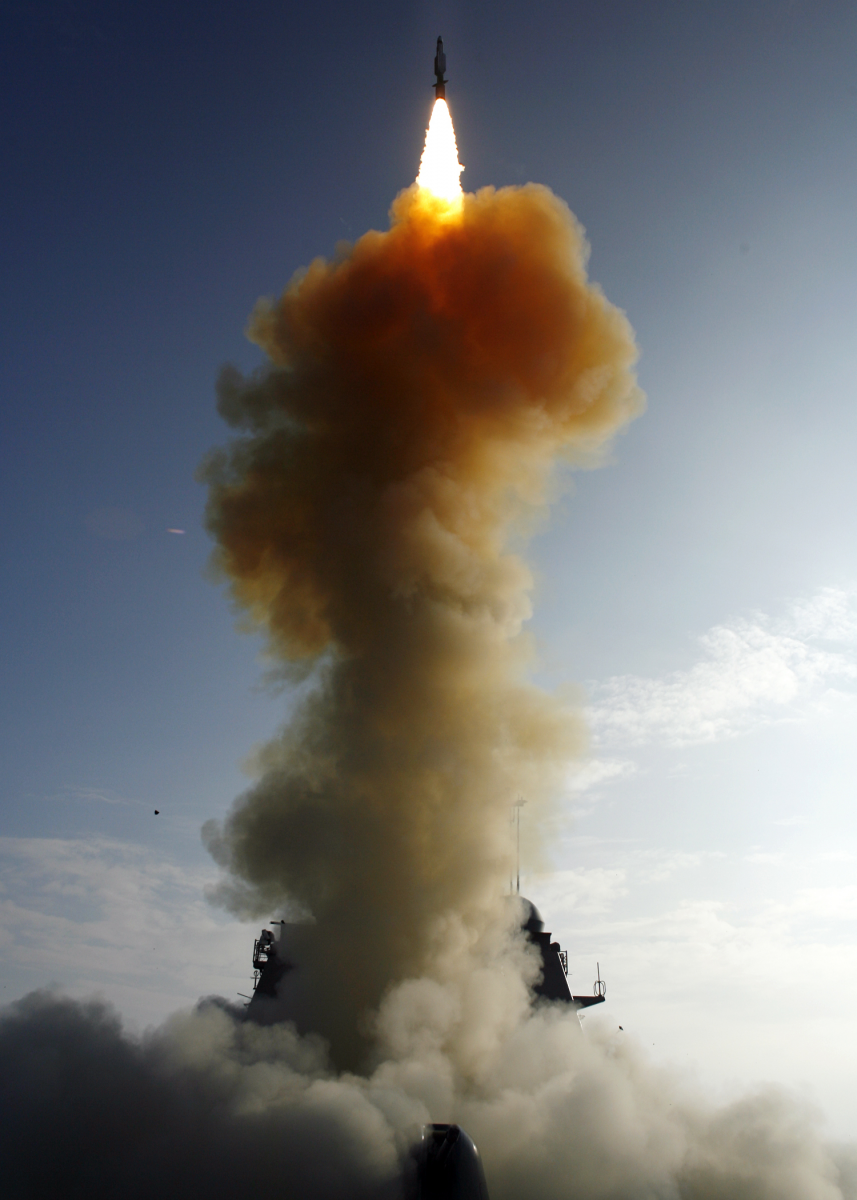 A core rationale for the resolution, which was sponsored by the United Kingdom, is “that the creation of long-lived orbital debris arising from the deliberate destruction of space systems increases the risk of in-orbit collisions and the potential for misunderstanding and miscalculations that could lead to conflict.”
A core rationale for the resolution, which was sponsored by the United Kingdom, is “that the creation of long-lived orbital debris arising from the deliberate destruction of space systems increases the risk of in-orbit collisions and the potential for misunderstanding and miscalculations that could lead to conflict.”





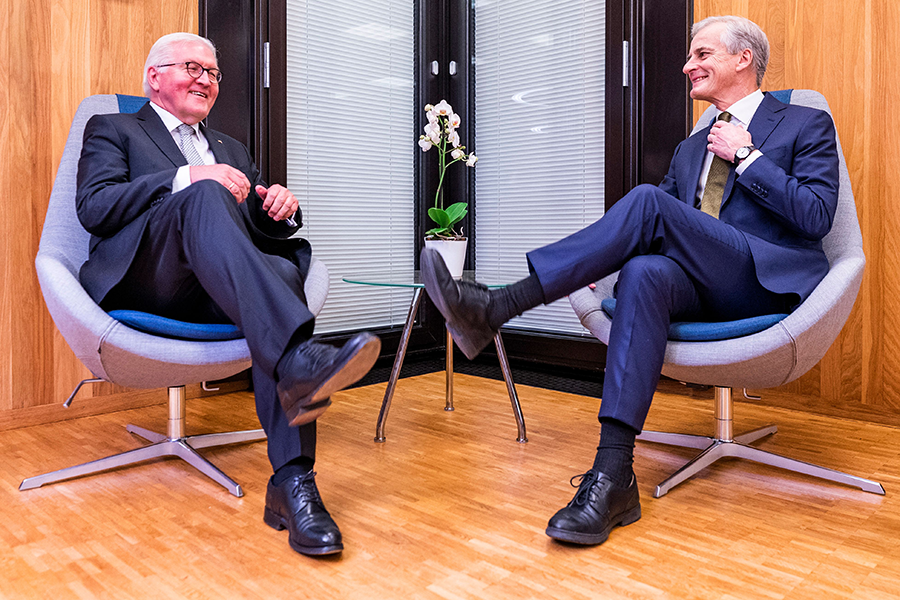 The 27 EU members, by contrast, have agreed to disagree on the TPNW. Three EU states are parties to the TPNW, while France, the only EU nuclear-weapon state, remains a staunch opponent. The other European states linger somewhere between these positions.
The 27 EU members, by contrast, have agreed to disagree on the TPNW. Three EU states are parties to the TPNW, while France, the only EU nuclear-weapon state, remains a staunch opponent. The other European states linger somewhere between these positions. All of this is unlikely to sway treaty opponents. Paris is leading the charge. In a speech on French nuclear policy on February 7, 2020, French President Emmanuel Macron accused “advocates of abolition” of attacking the legitimacy of nuclear deterrence “where it is easiest, that is to say in…European democracies.”
All of this is unlikely to sway treaty opponents. Paris is leading the charge. In a speech on French nuclear policy on February 7, 2020, French President Emmanuel Macron accused “advocates of abolition” of attacking the legitimacy of nuclear deterrence “where it is easiest, that is to say in…European democracies.”
 These and other threats present significant challenges to those who seek to maintain global governance and restrictions on missiles. The landscape has altered dramatically since the end of the Cold War, when the most significant effort to stop the spread of missile technology through multilateral export controls, known as the Missile Technology Control Regime (MTCR), was established. As a result, there is an urgent need for innovative thinking about how to reform the existing governance structure. The responsibility to do so needs to be global, and the choices will be difficult. Political will at the highest level is essential.
These and other threats present significant challenges to those who seek to maintain global governance and restrictions on missiles. The landscape has altered dramatically since the end of the Cold War, when the most significant effort to stop the spread of missile technology through multilateral export controls, known as the Missile Technology Control Regime (MTCR), was established. As a result, there is an urgent need for innovative thinking about how to reform the existing governance structure. The responsibility to do so needs to be global, and the choices will be difficult. Political will at the highest level is essential. The adaption of a fully elaborated and well-defined list of WMD-capable delivery systems creates a nonproliferation norm through the presumption of denial standard for Category I items and establishes the principle that states pursuing missile exportation or acquisition will be scrutinized. Paragraph 2 of the MTCR guidelines notes that “particular restraint will be exercised in the consideration of Category I transfers regardless of their purpose, and there will be a strong presumption to deny such transfers.”
The adaption of a fully elaborated and well-defined list of WMD-capable delivery systems creates a nonproliferation norm through the presumption of denial standard for Category I items and establishes the principle that states pursuing missile exportation or acquisition will be scrutinized. Paragraph 2 of the MTCR guidelines notes that “particular restraint will be exercised in the consideration of Category I transfers regardless of their purpose, and there will be a strong presumption to deny such transfers.” There is hope for a more radical approach. Russia, as it took over the rotating MTCR chair in 2021, expressed interest in radical reforms to global missile governance. Deputy Foreign Minister Sergei Ryabkov, in his address to the MTCR plenary on October 6, called for an experts group to begin talks on a legally binding global missile treaty.
There is hope for a more radical approach. Russia, as it took over the rotating MTCR chair in 2021, expressed interest in radical reforms to global missile governance. Deputy Foreign Minister Sergei Ryabkov, in his address to the MTCR plenary on October 6, called for an experts group to begin talks on a legally binding global missile treaty.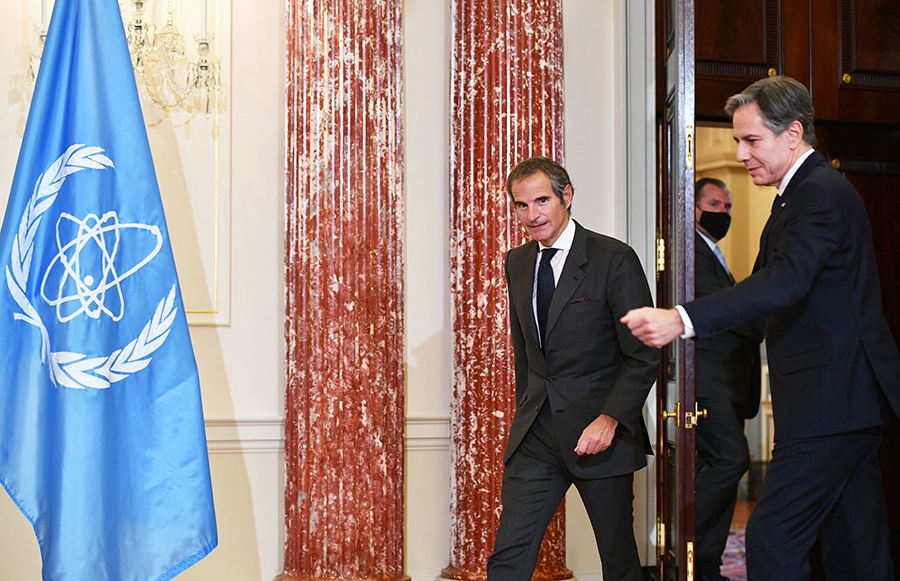 These technical measures are at the heart of international efforts to prevent the spread of nuclear weapons. They are accepted by non-nuclear-weapon state-parties to the NPT through the conclusion of comprehensive safeguards agreements. Under these agreements, the agency is empowered to verify independently that such states are complying with their obligation not to divert nuclear material for use in nuclear weapons or other nuclear explosive devices. Australia concluded such an agreement in 1974.
These technical measures are at the heart of international efforts to prevent the spread of nuclear weapons. They are accepted by non-nuclear-weapon state-parties to the NPT through the conclusion of comprehensive safeguards agreements. Under these agreements, the agency is empowered to verify independently that such states are complying with their obligation not to divert nuclear material for use in nuclear weapons or other nuclear explosive devices. Australia concluded such an agreement in 1974. Brazil, the only non-nuclear-weapon state with an active nuclear naval propulsion program, has already announced its plan to build a land-based prototype for a submarine reactor and has provided facility design information to the IAEA. Unlike the AUKUS project, the Brazilian project is based on a domestic fuel cycle, including conversion, enrichment of nuclear material using low-enriched uranium, fabrication of the fuel, and assembly of the fuel into a reactor core. The IAEA has not received a request from Brazil to conclude a relevant arrangement.
Brazil, the only non-nuclear-weapon state with an active nuclear naval propulsion program, has already announced its plan to build a land-based prototype for a submarine reactor and has provided facility design information to the IAEA. Unlike the AUKUS project, the Brazilian project is based on a domestic fuel cycle, including conversion, enrichment of nuclear material using low-enriched uranium, fabrication of the fuel, and assembly of the fuel into a reactor core. The IAEA has not received a request from Brazil to conclude a relevant arrangement.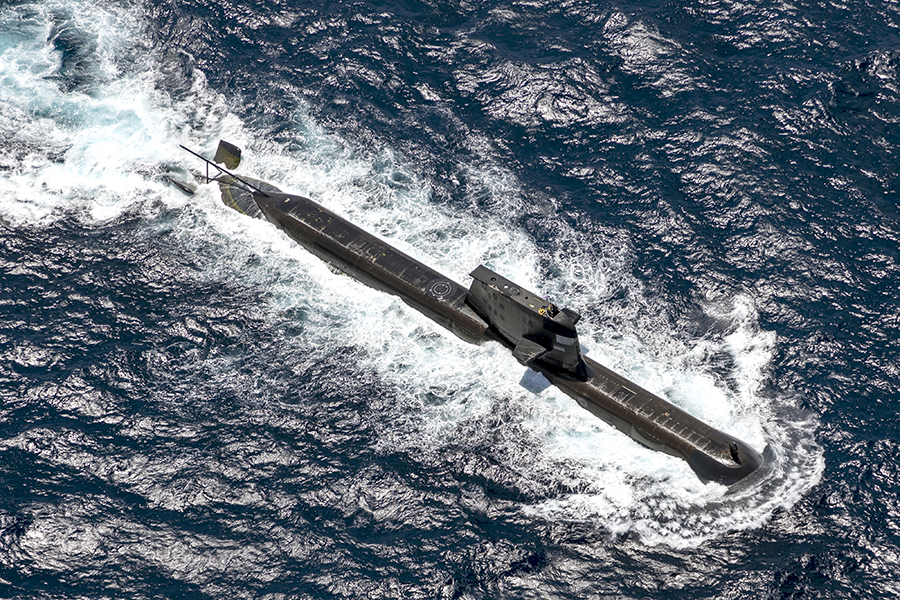 Implications for additional protocols. The implementation of an additional protocol could mitigate the possible negative impacts on safeguards of a paragraph 14 arrangement. An additional protocol offers the IAEA expanded access to information and locations, which increases the agency’s ability to detect indications of undeclared nuclear material and activities. Many measures contained in an additional protocol, such as the IAEA’s right to request access to and information about nuclear fuel-cycle-related research and development activities not involving nuclear material, could be relevant to a nuclear naval propulsion program, depending on what activities are actually carried out by the non-nuclear-weapon state.
Implications for additional protocols. The implementation of an additional protocol could mitigate the possible negative impacts on safeguards of a paragraph 14 arrangement. An additional protocol offers the IAEA expanded access to information and locations, which increases the agency’s ability to detect indications of undeclared nuclear material and activities. Many measures contained in an additional protocol, such as the IAEA’s right to request access to and information about nuclear fuel-cycle-related research and development activities not involving nuclear material, could be relevant to a nuclear naval propulsion program, depending on what activities are actually carried out by the non-nuclear-weapon state.
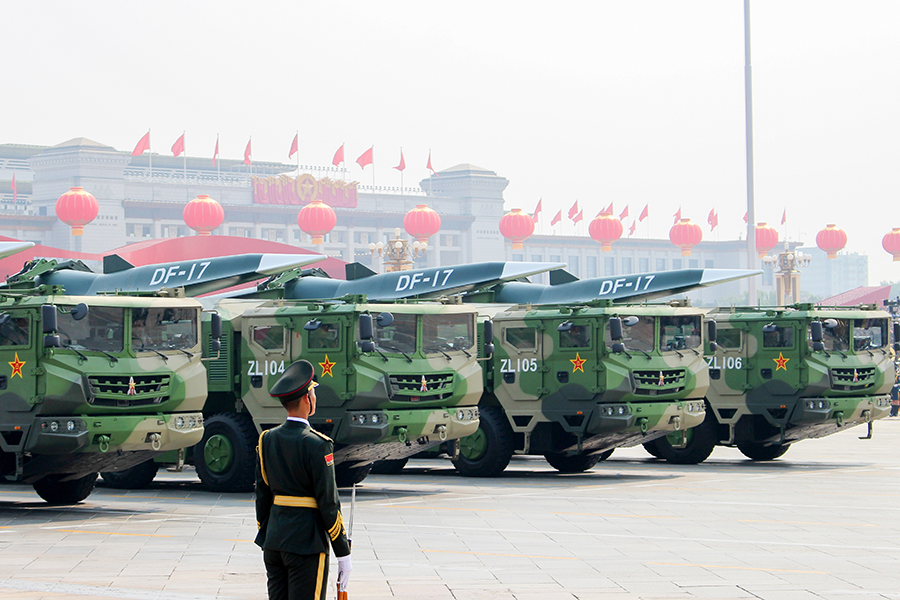 The book includes a timely and helpful analysis of the impact of China’s contemporary worldview, which increasingly may be shaping its perception of and approach to nuclear weapons more than any technical factors. Contributing author Andrew Scobell observes that China’s major “defense projects are the logical manifestations of a highly determined Leninist regime possessing ‘an extreme sense of insecurity.’” This insecurity appears to have become even more extreme in recent years as efforts by China’s paramount leader to centralize domestic power and strengthen internal control were met with growing criticism from the United States and other Western countries over issues such as human rights, democratic governance, and the rule of law. The West’s efforts to defend these long-held principles and values thus present the gravest threat to China’s security, as a result of “national security being conflated with regime security” by Beijing. As the Chinese leadership becomes increasingly alarmed by the growing threat from the U.S. “ideological confrontation” with China’s “political security” and “regime security,”
The book includes a timely and helpful analysis of the impact of China’s contemporary worldview, which increasingly may be shaping its perception of and approach to nuclear weapons more than any technical factors. Contributing author Andrew Scobell observes that China’s major “defense projects are the logical manifestations of a highly determined Leninist regime possessing ‘an extreme sense of insecurity.’” This insecurity appears to have become even more extreme in recent years as efforts by China’s paramount leader to centralize domestic power and strengthen internal control were met with growing criticism from the United States and other Western countries over issues such as human rights, democratic governance, and the rule of law. The West’s efforts to defend these long-held principles and values thus present the gravest threat to China’s security, as a result of “national security being conflated with regime security” by Beijing. As the Chinese leadership becomes increasingly alarmed by the growing threat from the U.S. “ideological confrontation” with China’s “political security” and “regime security,”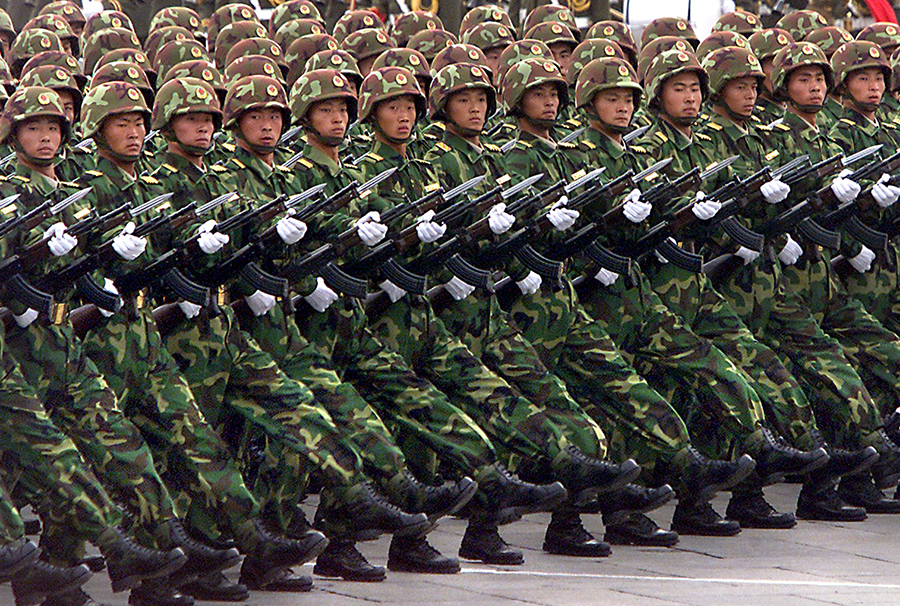 Delivering a limited nuclear strike against the U.S. homeland could impose a more demanding requirement on China’s capabilities than delivering a nuclear retaliation in an all-out exchange. Current U.S. homeland missile defenses cannot pose a realistic threat to China’s second-strike capability, but they could become a considerably greater threat to a limited Chinese nuclear strike. It is difficult to tell at this point whether China’s reported development of exotic nuclear delivery technologies, such as the reported test of an orbital hypersonic-glider system, is driven by an interest to acquire a limited nuclear strike capability against the U.S. homeland for the purpose of achieving escalation management. If escalation management indeed becomes China’s goal, however, traditional understandings about the U.S.-Chinese nuclear relationship and strategic stability would need to be fundamentally reexamined.
Delivering a limited nuclear strike against the U.S. homeland could impose a more demanding requirement on China’s capabilities than delivering a nuclear retaliation in an all-out exchange. Current U.S. homeland missile defenses cannot pose a realistic threat to China’s second-strike capability, but they could become a considerably greater threat to a limited Chinese nuclear strike. It is difficult to tell at this point whether China’s reported development of exotic nuclear delivery technologies, such as the reported test of an orbital hypersonic-glider system, is driven by an interest to acquire a limited nuclear strike capability against the U.S. homeland for the purpose of achieving escalation management. If escalation management indeed becomes China’s goal, however, traditional understandings about the U.S.-Chinese nuclear relationship and strategic stability would need to be fundamentally reexamined.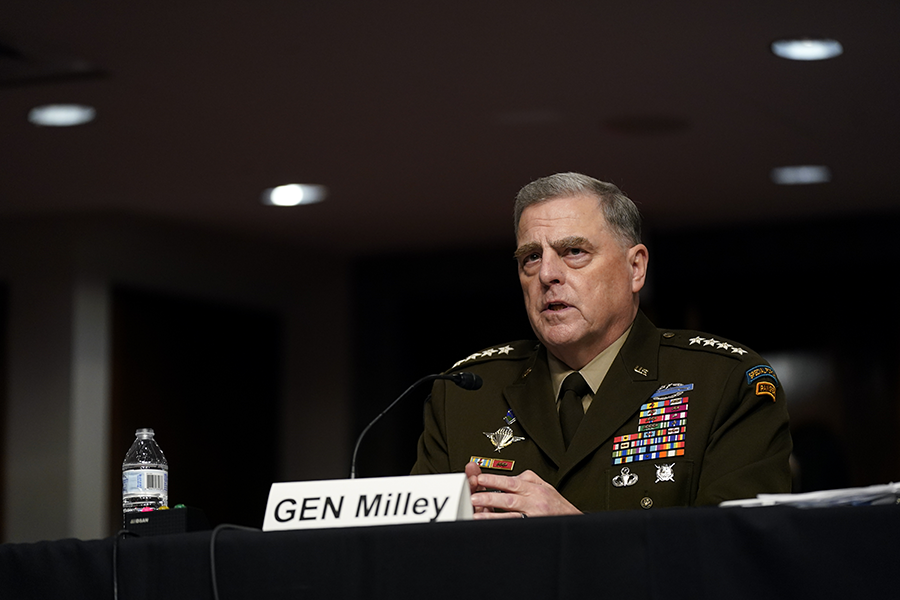 Former Defense Secretary William J. Perry has alarmed the public by warning that there is no check on the raw power of the president to unilaterally order a nuclear strike—alternately termed “nuclear launch authority”—and that the commander-in-chief might “go rogue.” (See his 2020 book:
Former Defense Secretary William J. Perry has alarmed the public by warning that there is no check on the raw power of the president to unilaterally order a nuclear strike—alternately termed “nuclear launch authority”—and that the commander-in-chief might “go rogue.” (See his 2020 book: 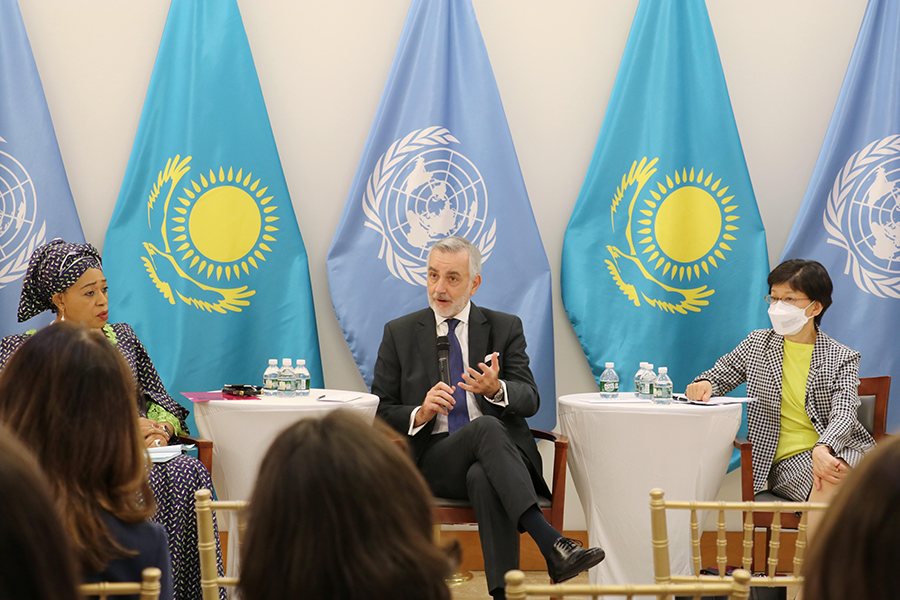 After multiple delays due to the COVID-19 pandemic, the president-designate of the 10th NPT review conference announced in November that the meeting will finally be held Jan. 4–28 at UN headquarters in New York.
After multiple delays due to the COVID-19 pandemic, the president-designate of the 10th NPT review conference announced in November that the meeting will finally be held Jan. 4–28 at UN headquarters in New York.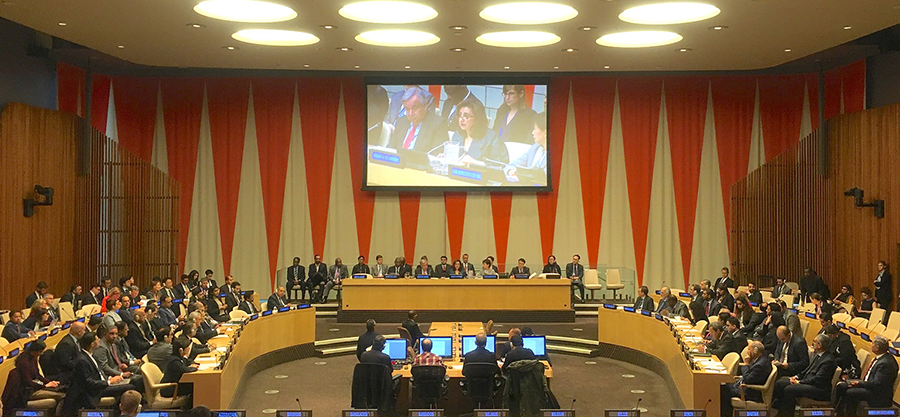 Asked by Arms Control Today what the U.S. message at the conference will be, Anthony Wier, deputy assistant secretary of state for international security and nonproliferation, said in an email, “We are deeply committed to restoring U.S. leadership on arms control and nonproliferation and to working closely with our partners and allies to address 21st Century challenges. At the NPT RevCon, the United States will do just that.”
Asked by Arms Control Today what the U.S. message at the conference will be, Anthony Wier, deputy assistant secretary of state for international security and nonproliferation, said in an email, “We are deeply committed to restoring U.S. leadership on arms control and nonproliferation and to working closely with our partners and allies to address 21st Century challenges. At the NPT RevCon, the United States will do just that.”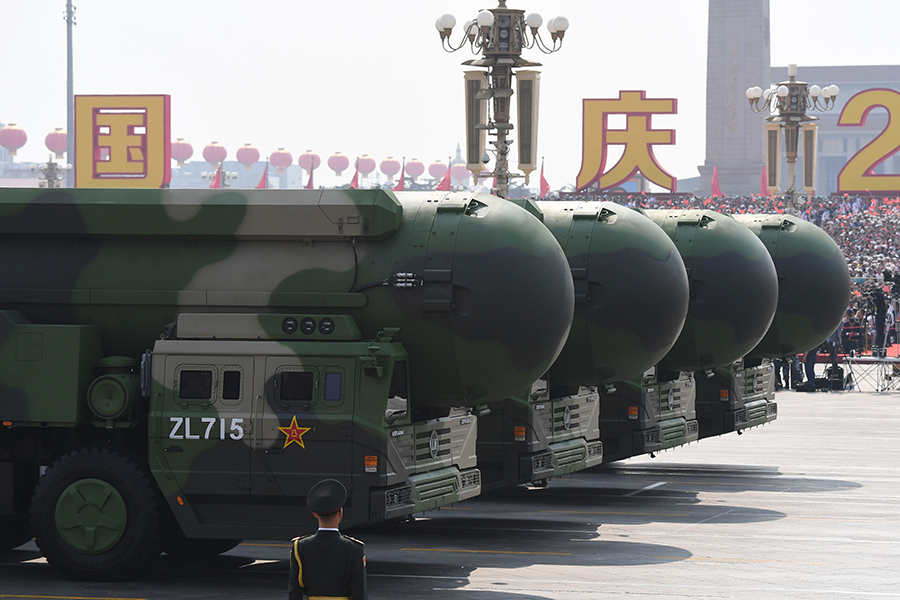 Viewed alongside recent revelations about the construction of at least 250 new missile silos in northwestern China, the annual report highlights a concerning nuclear buildup. Last year, the Pentagon estimated that Beijing had a total nuclear warhead stockpile in the low 200s and projected it would at least double over the next decade. (See
Viewed alongside recent revelations about the construction of at least 250 new missile silos in northwestern China, the annual report highlights a concerning nuclear buildup. Last year, the Pentagon estimated that Beijing had a total nuclear warhead stockpile in the low 200s and projected it would at least double over the next decade. (See 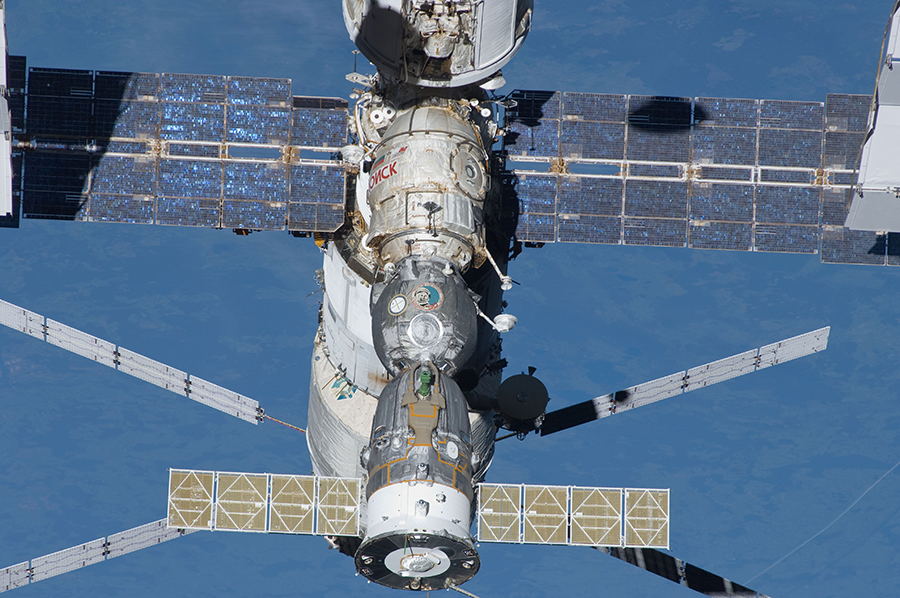 “The prevention of an arms race in outer space is a UK priority,” James Cleverly, the minister leading the UK portfolio on space security, said after the vote. “There is no doubt that there is a growing range of threats to space systems, and a risk that those threats could lead to miscalculation and, in turn, escalation and conflict. Only together can we find solutions to keep space peaceful, sustainable, and open to all,” he added.
“The prevention of an arms race in outer space is a UK priority,” James Cleverly, the minister leading the UK portfolio on space security, said after the vote. “There is no doubt that there is a growing range of threats to space systems, and a risk that those threats could lead to miscalculation and, in turn, escalation and conflict. Only together can we find solutions to keep space peaceful, sustainable, and open to all,” he added.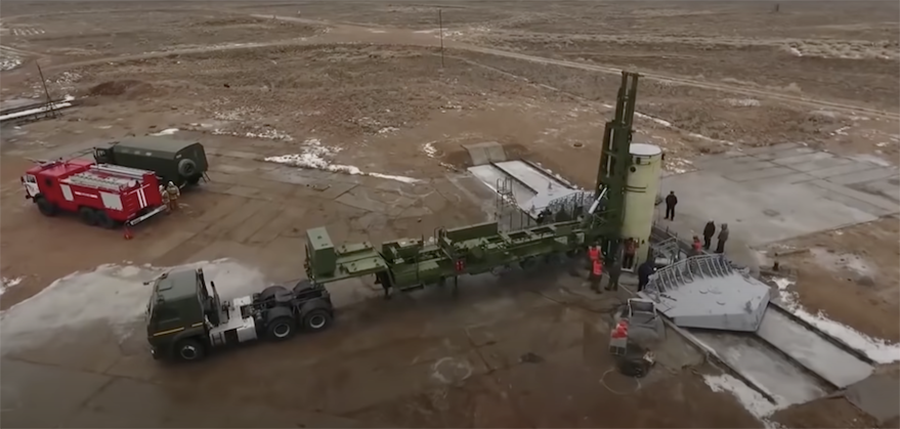 The destruction of the inactive Russian satellite, known as Cosmos 1408, caused the seven crew members aboard the International Space Station—four Americans, two Russians, and a German—to take shelter multiple times as the station’s orbit intersected with the debris and to seal off modules of the station. The collision occurred about 500 kilometers above the surface and 80 kilometers above the space station’s orbit.
The destruction of the inactive Russian satellite, known as Cosmos 1408, caused the seven crew members aboard the International Space Station—four Americans, two Russians, and a German—to take shelter multiple times as the station’s orbit intersected with the debris and to seal off modules of the station. The collision occurred about 500 kilometers above the surface and 80 kilometers above the space station’s orbit.